Rare Rides Icons: The History of Stutz, Stop and Go Fast (Part III)

We pick up the Stutz story once again today, at a turning point in the brand’s history. Though its foundation as Ideal Motor Car Company was only a few years prior in 1911, by 1919 big changes were afoot at the company. Disenchanted that he’d lost control of his company when he sought outside investment capital, Harry C. Stutz departed his own firm in July of that year. He took with him the other remaining founder, Henry Campbell. Control of Stutz Motor Cars fell to its primary investor; the man who’d been running the company since the IPO in 1916: Allan A. Ryan.
Stutz finished out the remainder of 1919 without incident. The Series H Bearcat remained on sale in its expensive and well-equipped format, alongside several other Stutz body styles based on the Bearcat platform and running gear. 1920 was a promising year for Stutz, as prices on its cars increased alongside its sales. Wealthy Americans celebrated the conclusion of World War I by pumping lots of money into the economy and buying new luxury cars. That year saw the Series K revision on the Bearcat, which was similar to the outgoing series H. With minor trim adjustments, it became even more expensive than before. At $3,900 ($56,812 adj.) the Series K was nearly 17 percent more expensive than the year prior.
On the office side of the company, however, things had not gone so well since Ryan was put in charge. Ryan was the 40-year-old son of finance magnate Thomas Fortune Ryan (1851-1928). The elder Ryan was successful in the insurance business, transportation, and tobacco. A staunch Catholic, he supported the construction of many charitable buildings and services in his home state of Virginia. But his son was not so scrupulous in his activities: Within eight months of Harry Stutz’s departure, Ryan attempted to make money by manipulating the stock market.
What he attempted to do was rig the market by cornering Stutz stock. It was a game of shorts and floating stock, where the stock owner (Ryan) manipulated the market so the stock’s owner could name their price. Those holding short positions were “cornered” and had to pay what the owner demanded. There were only four such corner activities in the 20th century, and Stutz was one. The practice was outlawed in 1934 by the SEC.
Ryan had borrowed millions of dollars to support his market manipulation activities. His cornering shorts happened to involve members of the New York Stock Exchange board of governors, who were not happy with his activities. In the end, an NYSE official committee threatened to delist Stutz if Ryan didn’t cease his activities. Not to be threatened, Ryan stated he’d just demand $1,000 a share for the stock. With a shrug, the committee suspended all trading of Stutz stock immediately, and after a big legal battle delisted Stutz entirely. For his part, Allan A. Ryan was blackballed from the stock exchange, was bankrupt by 1922, and was disinherited by his father. As they say, play stupid games.
While the Stutz offices in Indianapolis were in complete chaos, the Bearcat moved on to a new series in 1921, the K. This series edit brought with it a new engine labeled DH, that featured a detachable head. There was a larger change at that time though, with the overall driving landscape of the United States: Left-hand drive. Left-hand drive was quickly becoming the standard for U.S. automobiles (Ford adopted it on the Model T in 1908), and the Bearcat made the adjustment with the rest of the Stutz line. Sort of.
It turned out 1921 was the last year for the original Bearcat, as the Stutz KLDH (Series K, Left-hand drive, DH engine) cars meant a need for centrally placed brake and transmission levers. In the Bearcat they were always located outside, on the right side of the body. And the Bearcat’s interior just was too narrow for the levers to be inside. Thus, 1922 Stutz models debuted without the Bearcat for the first time. It was a short-lived absence, as Stutz management felt it needed the Bearcat model as their most recognizable product. In 1923, the Roadster version was simply renamed to Bearcat and made for the first-ever Bearcat that had doors. How mainstream!
Meanwhile, there were other changes afoot at Stutz, as Ryan’s bankruptcy meant he lost all the stock he’d tried to hold and manipulate circa 1920. The stock, and thus ownership of the company, fell into the hands of two prominent businessmen: Charles Michael Schwab (1862-1939), and Eugene Van Rensselaer Thayer Junior (1881-1937). The latter of the pair was then president of Chase National Bank. They’d need help running a car company, so they turned to a man by the name of Frederick Ewan Moskowics.
Moskowics was formerly an employee at Daimler, and also of American brands Marmon and Franklin. He was put in charge in 1923 and changed the product direction at Stutz entirely. However, he was not interested solely in sports luxury automobiles, but rather cars imbued with safety features. The so-called safety cars were a new thing in the automotive industry, and Moskowics was sure they had a bright future.
With its new safety direction, Stutz lost its interest in the Bearcat’s original intent. A racing pedigree, minimal bodywork, tiny cockpit, and no doors weren’t the hallmarks of safety. So they dropped it. The Bearcat existed as a rebadge of the roadster only for the 1923 model year, at which point it disappeared. For the next two years, Stutz sold their other cars based on the Bearcat but not called Bearcat, and the roadster returned to the lineup.
After 1925, Stutz focused on two distinct lines of cars, which were larger and more expensive than before. They featured new elements of safety: A lower center of gravity, safety glass, hydraulic braking system, and a transmission marketed as “Noback.” The Noback transmission had a hill holding feature that was quite innovative for the time. Lines were delineated by their engines with either six or eight cylinders, and called Model Six or Vertical Eight, with a suffix name like Blackhawk to denote their body style.
The latter eight-cylinder models were introduced for the 1926 model year, as higher cylinder count became a more important indicator of a luxury car. The first eight-cylinder the brand offered was the Vertical Eight AA. Moscowics directed the development of the Vertical Eight engine, a SOHC inline-eight design. At 287 cubic inches (4.7 liters) displacement, the engine produced 92 horsepower. It used two spark plugs at each cylinder for better performance, which Stutz marketed as a “twin ignition.”
Sales of the Vertical Eight were good initially, as buyers praised the model’s slick appearance and high performance. In 1926 sales hit the 5,000 mark. Not an inconsiderable tally for a car that started at over $3,000 ($47,119 adj.).
But all the performance in the world couldn’t conceal the other engineering issues present in Stutz cars, nor could it stave off the upcoming Depression. We’ll continue there next time.
[Images: Stutz, YouTube]

Interested in lots of cars and their various historical contexts. Started writing articles for TTAC in late 2016, when my first posts were QOTDs. From there I started a few new series like Rare Rides, Buy/Drive/Burn, Abandoned History, and most recently Rare Rides Icons. Operating from a home base in Cincinnati, Ohio, a relative auto journalist dead zone. Many of my articles are prompted by something I'll see on social media that sparks my interest and causes me to research. Finding articles and information from the early days of the internet and beyond that covers the little details lost to time: trim packages, color and wheel choices, interior fabrics. Beyond those, I'm fascinated by automotive industry experiments, both failures and successes. Lately I've taken an interest in AI, and generating "what if" type images for car models long dead. Reincarnating a modern Toyota Paseo, Lincoln Mark IX, or Isuzu Trooper through a text prompt is fun. Fun to post them on Twitter too, and watch people overreact. To that end, the social media I use most is Twitter, @CoreyLewis86. I also contribute pieces for Forbes Wheels and Forbes Home.
More by Corey Lewis
Latest Car Reviews
Read moreLatest Product Reviews
Read moreRecent Comments
- Canam23 I've rented them and found them...fine. I wish Ford had continued with or came up with a new generation Fusion which was a far better sedan.
- MaintenanceCosts The ES will do well in an electric version, assuming it's more thoroughly baked than the half-finished RZ. There's plenty of the Lexus customer base who use planes whenever they travel and don't need to drive their own cars outside the metro area.
- Legacygt It was more than 20 years ago that the Bangle designed BMW sedans started looking a little bit awkward. But the lineup today is chock full of downright ugly vehicles. This is one of them.
- Jeff It does state in this article that Europeans as well as Americans have cooled on EVs. I can see push back from consumers on the 2035 deadline for EVs in Europe and in states like California. I have no problem with manufacturers offering EVs but many for at least now don't want EVs. Maybe GM instead of planning to do away with the Malibu to make more EVs should have offered the Malibu as only a hybrid like Toyota is offering the Camry for 2025. It would cost GM a lot less to offer a hybrid Malibu and it would outsell any EV that plant would produce. I even think GM would increase sales of the Malibu as a hybrid only and more competitive pricing.
- Kwik_Shift_Pro4X I fell asleep looking at that image.



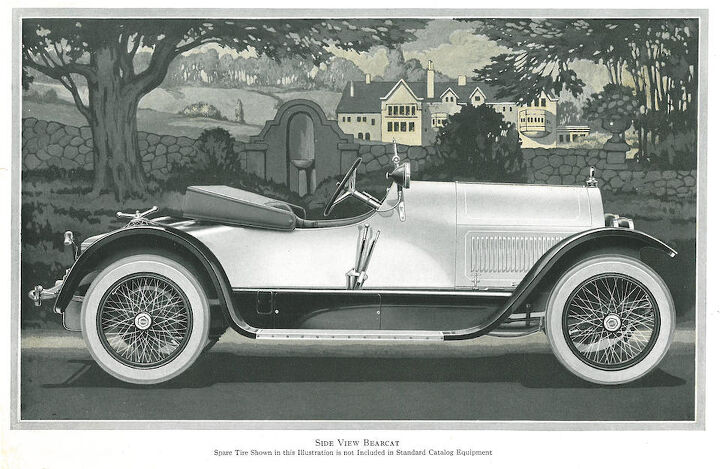



















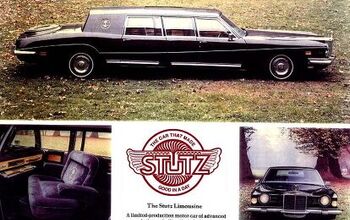

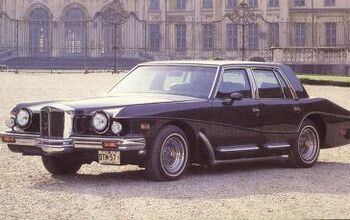
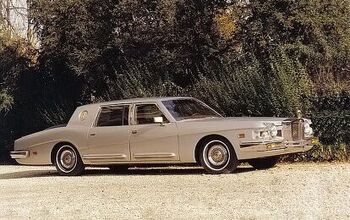
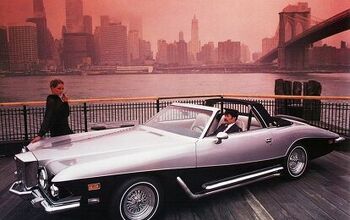










Comments
Join the conversation
Last two photographs: Are those landau bars functional or just decorative?
Interesting that Stutz managed to get thru 1919-20 without being particularly affected by the post-WWI Recession that really shook up the motor industry. I do remember reading that things had gotten bad enough over those two years that General Motors seriously considered dropping Chevrolet, as it had no hope of directly competing with the Ford Model T, and Indian Motocycles (SIC) came damn near to going under, mainly due to their letting the dealers rot during the war years, while they put everything into getting military contracts.